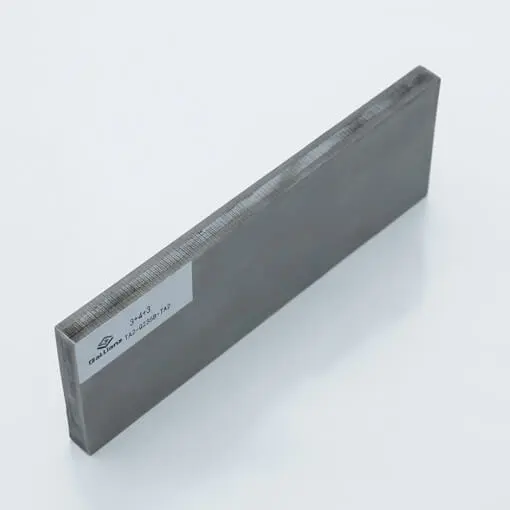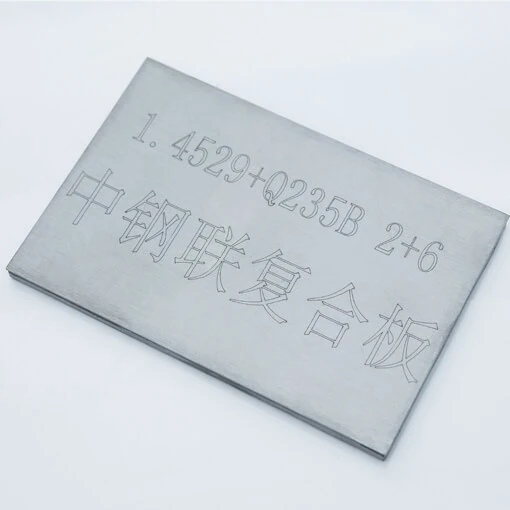When it comes to selecting the right material for your project or application, the choice between titanium clad stainless steel plate and stainless steel clad plate can significantly impact performance, cost, and longevity. It's essential to understand the differences between these materials to make an informed decision. The material you choose can affect various aspects of your project, including corrosion resistance, mechanical properties, thermal conductivity, and cost-effectiveness. Therefore, selecting the appropriate material is crucial to ensure the success and longevity of your project.
Titanium clad stainless steel plate offers exceptional corrosion resistance, making it suitable for applications where exposure to harsh environments or corrosive substances is a concern. Titanium's inherent resistance to corrosion, combined with the protective layer of stainless steel, provides long-term durability.
Titanium clad stainless steel plate combines the strength and durability of stainless steel with the lightweight properties of titanium. This results in a material that offers high strength-to-weight ratio, making it suitable for structural applications where strength is essential.
While titanium has lower thermal conductivity compared to stainless steel, the combination of these materials in a clad plate offers a balanced thermal performance. This makes titanium clad plates suitable for applications requiring thermal stability and resistance to temperature fluctuations.
Although titanium clad stainless steel plate may have a higher initial cost compared to stainless steel clad plate, it can provide long-term cost-effectiveness due to its superior corrosion resistance and durability. The extended lifespan and reduced maintenance requirements can offset the initial investment over time.

Stainless steel clad plate is renowned for its excellent corrosion resistance, particularly in acidic or corrosive environments. The stainless steel outer layer provides a protective barrier against rust, making it suitable for a wide range of applications.
Stainless steel clad plate offers robust mechanical properties, including high tensile strength and impact resistance. This makes it suitable for structural components, pressure vessels, and other applications requiring strength and durability.
Stainless steel has higher thermal conductivity compared to titanium, making stainless steel clad plate suitable for applications requiring efficient heat transfer or thermal management. It can withstand high temperatures without compromising its mechanical properties.
Stainless steel clad plate is often more cost-effective than titanium clad stainless steel plate, making it a preferred choice for projects with budget constraints. The lower initial cost, combined with its durability and corrosion resistance, makes it an attractive option for various applications.

Consider the specific requirements of your application, including environmental conditions, operating temperatures, and exposure to corrosive substances.
Evaluate the level of corrosion resistance required for your project and choose the material that offers the best protection against corrosion.
Assess the mechanical strength requirements of your project and select the material that meets or exceeds the necessary specifications.
Consider your budget constraints and weigh the initial cost against the long-term benefits and cost-effectiveness of each material.
Take into account environmental factors such as temperature fluctuations, humidity levels, and exposure to chemicals or saltwater.
Evaluate the maintenance requirements of each material and choose the option that offers minimal maintenance and long-term durability.
While both materials offer excellent corrosion resistance, titanium clad stainless steel plate provides superior protection against corrosive environments due to the corrosion-resistant properties of titanium.
Titanium clad stainless steel plate combines the mechanical properties of stainless steel with the lightweight characteristics of titanium, offering high strength and durability. On the other hand, stainless steel clad plate offers robust mechanical properties, making it suitable for various structural applications.
Stainless steel clad plate has higher thermal conductivity compared to titanium clad stainless steel plate, making it preferable for applications requiring efficient heat transfer or thermal management.
Titanium clad stainless steel plate tends to have a higher initial cost compared to stainless steel clad plate. However, the long-term cost-effectiveness of each material depends on factors such as lifespan, maintenance requirements, and performance in specific applications.
| Feature | Titanium Clad Stainless Steel Plate | Stainless Steel Clad Plate |
| Composition | Titanium bonded with stainless steel | Stainless steel bonded with a base material (carbon steel, aluminum, etc.) |
| Corrosion Resistance | Excellent, especially in marine and chemical environments | High, but varies depending on the stainless steel grade |
| Strength & Durability | High strength and lightweight | Strong but heavier than titanium-clad versions |
| Thermal Conductivity | Lower than stainless steel, but provides good heat resistance | Higher thermal conductivity, making it better for heat transfer applications |
| Weight | Lighter due to titanium's low density | Heavier due to the presence of carbon steel or other base metals |
| Cost | More expensive due to titanium's cost | Generally more affordable than titanium-clad plates |
| Applications | Used in aerospace, medical, and chemical processing | Common in construction, food processing, and pressure vessels |
| Weldability | More challenging to weld due to titanium’s properties | Easier to weld, depending on the base material |
| Oxidation Resistance | Exceptional at high temperatures | Good, but depends on stainless steel grade |
| Lifespan | Longer lifespan, especially in extreme conditions | Durable but may require more maintenance in harsh environments |
Determine your priorities based on the specific requirements of your project, such as corrosion resistance, mechanical strength, thermal conductivity, and budget constraints.
Seek advice from materials engineers, metallurgists, or industry experts to gain insights into the suitability of each material for your application and make an informed decision.
Conduct testing and trials to evaluate the performance of each material under simulated operating conditions, including corrosion tests, mechanical testing, and thermal analysis.
Choosing between titanium clad stainless steel plate and stainless steel clad plate requires careful consideration of various factors, including application requirements, corrosion resistance needs, mechanical strength requirements, budget constraints, environmental factors, and maintenance considerations. By understanding the properties and advantages of each material, consulting with experts, and conducting testing and trials, you can make a well-informed decision that aligns with your project objectives and ensures long-term success.